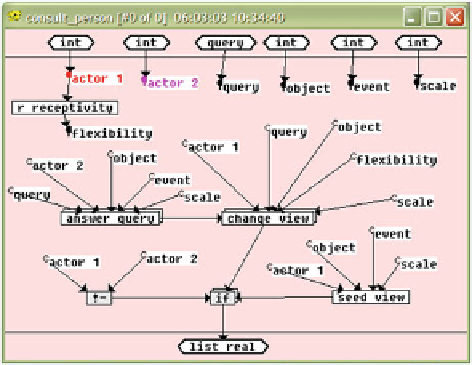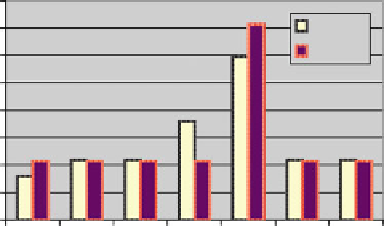Information Technology Reference
In-Depth Information
Fig. 13.6
Clarity function for
consulting and changing view
Fig. 13.7
Object 1 modified
by object 2 for actor 2
0.4
0.35
Actor2
Actor3
0.3
0.25
0.2
0.15
0.1
0.05
0
0
1
2
3
4
5
6
All Actors initially assume, without any other knowledge, that all other Actors will
have the same view as themselves. The distribution of effects has now changed from
the base distribution of 0.143 and all the actors have an increased rating at one point
of the scale to a new value of 0.357. Since all of the seven positions on the scale still
have to total to unity, the remaining items dropped back to 0.107.
We now illustrate a single communicative exchange between actors 2 and 3 using
the function 'consult_person' shown in Fig.
13.6
. Note that the
parameters
'actor 1'
and 'actor 2' in Fig.
13.6
are the first and the second actors. In this example these
parameters are filled with value 'actors 2' and 'actors 3' respectively.
Figure
13.6
shows two processes: 'answer_query' and 'change_views'. In this
example Actor 2 asks Actor 3 “Is Object 2 of
higher
value than Object 1?” In
this case the response is “
No
”. This then triggers 'change_view' for Actor 2,
which is graphed in Fig.
13.7
. The change can be seen in relationship to Actor
3's view that remains unchanged since it has no information yet about actors 2's
opinion.


